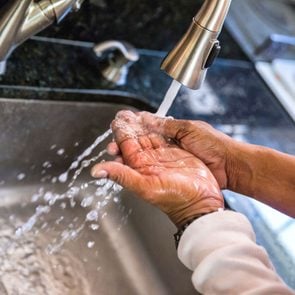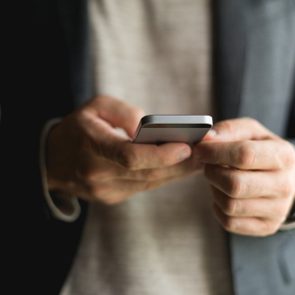Clutter makes small spaces seem even smaller. Tackle that issue in your small bedroom closet with a two-part strategy: some smart weeding-out, then reorganizing via efficient, accessible storage. If done right, it can effectively double your limited closet space and help you find what you need, when you need it. Inspired? Start here.
Start Fresh
Begin by taking everything out of the closet. Set aside for donation any items that no longer fit you or your style. Create another pile of items needing repairs, by you or a tailor.
Sort what’s left using an A-B-C priority system. A is most worn, B is sometimes worn and C is rarely worn at all. All A-category items take up your closet’s easy-access real estate, front and centre, whether hanging space or shelving. Relegate B-category items to the floor. Those Cs can live on upper, out-of-the-way shelves or be stored elsewhere — under the bed, or in a labelled bin in the basement, garage or attic. (Just make sure you never store these things in the attic.)
Start a “Maybe” Bin
It’s a great way to remove less-used items from prime space. If you go an entire year without looking for your “maybe” items, consider them safe for donation. (Here are the things a professional organizer would recommend you toss.)
Customize
Be realistic about your closet’s size and layout, as well as everything you’re trying to cram into it. Remember: Its main function should be storing your everyday go-to items within easy reach. Are most of them on hangers? You might need an additional hanging rod or a double-hang bar (they’re easy to install). Shoes galore? Consider a triple-tiered floor rack or a hanging shoe organizer. Looking for inspiration? Check out these impressive home organization makeovers.
Divide and Conquer
Open shelves are breeding grounds for clutter, allowing items to spill into one another. That makes it hard to find things and quickly makes a mess of a small space. There are lots of remedies to this problem, depending on what your shelves hold: shelf dividers for sweaters or purses; stackable organizers for shirts; cubbies for shoes. Those create a clean look that’s easy to maintain, and maximizes unused vertical space.
Colour Code
Consider colour-coding your items, making things easier to find and creating a space of visual comfort. First sort clothing into categories, such as pants, skirts, tops and sweaters. Then group by colour within each category.
Get Hooked
When you’re dealing with a small space, you want to use all of it, including doors and walls. Enter hooks. Stick-on hooks are especially easy to install on walls, doors or even the side of shelving. Consider them for frequently-used items like robes or your favourite sweatshirt, or accessories like scarves, jewelry and purses. When they’re on a door back, front and centre, you’re most likely to use them.
Plan Maintenance
Plan seasonal or monthly check-in sessions to revisit what’s working in your closet and what’s not. With small closets especially, one smart, subtle change can make a big improvement! Put in on your calendar. A quick check-in sooner is way easier than fixing a cluttered mess later.
I work at a medium-sized grocery store in Montreal’s Plateau neighbourhood. It’s the kind of place that gets a lot of regulars—mostly students and locals—and fills up quickly on weekends. We’re used to having busy days, but the past couple weeks have been beyond hectic.
On Thursday, March 12, the Quebec government announced that it was closing all schools, libraries and other public places more than 250 people could gather in an attempt to stop the spread of coronavirus. The next day the store was the busiest I’ve ever seen it. I think people started to realize how serious the COVID-19 pandemic actually was. Hundreds of people showed up throughout the day to stock up on food.
Our store has six cash registers. The day after the government’s announcement we had to keep all of them open from 10 a.m. until close. There were lineups down the aisles all the way to the back of the store, and people were waiting 20 or 30 minutes just to pay. We also had a line of about 30 people outside for most of the afternoon. It was nuts. I didn’t have time to eat lunch, and whenever one of us on cash had to use the bathroom, we’d have to bring in a coworker off the floor to cover for us—we couldn’t afford to close any of the tills, even for five minutes.
Since then, the atmosphere in the store has been different. I can tell people are anxious. Customers are mostly being considerate and giving each other space, but whenever someone coughs or sneezes everyone turns around to make sure that person sneezed into their elbow. A couple of times I’ve heard customers yelling at each other to cover their mouths. People also stop and chat less. I’m used to striking up conversations with people at the till or in the aisles while I’m stocking fridges, but that’s happening far less—everyone just wants to get in and out.

I know there’s a lot of misinformation out there because I’ve seen customers come in wearing some strange get ups. Lots of people arrive with scarves wrapped around their faces. One guy even came in with a plastic Walmart bag wrapped around his entire head, with a slit cut out for his eyes.
We’re taking some steps for safety: our manager gave us gloves to wear, which is good, but he hasn’t installed any plexiglass shields at the cash like some other stores have. We’ve also started limiting the number of customers who are allowed in the store at once. That made me feel much more comfortable at work.
A lot of my coworkers have left—some are students who have gone home to live with their parents, while others just didn’t want to work a public-facing job during the pandemic. We had to hire a few new people last week so that we weren’t understaffed.
If I can find a way to afford to cut back on my hours I’d like to. Even though my store is taking precautions, I still come into contact with a bunch of people every day which can be scary. Grocery store workers across Canada are putting their health at risk every time they come in to work, but a lot of us are still making close to minimum wage. I realized that I feel more exhausted than normal even though I’m working the same hours. I think that it just mentally takes more out of you.
There have been some moments of kindness in the midst of the chaos. I’ve overheard people talking on the phone who sounded as though they were organizing grocery deliveries for others who were stuck at home. And this past weekend I had a very nice lady thank us for continuing to work. She told me and she thought we were very brave—I really appreciated that.
I strongly encourage people to stay home as much as possible, and only grocery shop when they really need to. They can protect our health by helping us making sure our stores don’t get too crowded.
And when you do head to the store, try to remember to say something kind to the people working. I know everyone is worried, and wants to talk about the pandemic, but it’s hard to be having the same scary conversations day after day. Instead, tell us a funny anecdote, or about something nice that happened to you that week. We’ll appreciate the distraction, and you’ll make our day just a bit brighter.
Toilet paper is selling out quicker than ever before, and as we scramble to find it in stores, we’re left wondering: What did people do without it in the first place? While we’re definitely not suggesting that you resort to these options, here are some personal hygiene items that our ancestors used before commercially produced toilet paper hit the markets in 1857.
Shared sponges on sticks
Privacy and proper sanitation were scarce luxuries in the ancient Romans’ public restrooms. Their outdoor communal restrooms, called “latrines,” had no dividing walls, and people’s cleaning methods would certainly not hold up to sanitation standards today. Each individual would use the same communal cleansing sponge that was attached to the end of a long stick, called a tersorium. To clean the sponge after use, it would sit in a container filled with saltwater or vinegar. In addition to being exposed to an unsettling amount of bacteria on that communal sponge, the Romans had to worry about spontaneous hydrogen sulfide and methane flames exploding from beneath them while using the toilet.
Personal-hygiene sticks and extra-large scented paper
The Silk Road, a network of ancient travel and trade, had many of its own latrines scattered throughout Ancient Asia. In fact, archaeologists discovered “personal hygiene sticks” in one that was located on the outskirts of the Tamrin Basin, believed to date back to the Han Dynasty around 2,000 years ago. The sticks were crafted out of bamboo, with one end of it wrapped in fabric for wiping. Things eventually evolved, though. The first documented use of toilet paper was in 6th century China. In 1391, a Chinese emperor ordered the production of two-by-three-foot scented sheets of paper that he and his family used in the restroom.
Stones and ceramic
The Ancient Greeks used harsher methods to maintain hygiene: stones, called pessoi, and ceramic pottery shards, called ostraka. Sometimes, as a form of vengeance, the broken shards would have the names of enemies inscribed on it. The same shards would often be used as a means of voting people out of towns based on whose names were written on it. While the ancient Greeks didn’t have to worry about the same modern-day plumbing issues that we do, it’s likely that regularly using such abrasive objects often led to irritation. (These home remedies for hemorrhoids would’ve come in handy.)
Dried corncobs
When they arrived in colonial America, the British had to get creative with their personal hygiene choices. First, they used dried corncobs as their form of toilet paper. Then, as newspapers and catalogs started being circulated in the late 18th and 19th centuries, many Americans began using pages from the Farmers’ Almanac and the Sears, Roebuck and Company catalogue. Fun fact: Manufacturers often created holes in the corners of their papers so they could be easily hung and used in outhouses.
Medicated paper
Finally, in 1857, Joseph Gayetty started to manufacture his own “medicated paper,” which he made out of hemp and aloe vera. This not-so-painful alternative inspired others to try to sell their own versions, such as the Hoberg Paper Company of Green Bay, which was later renamed as Charmin. If you find that fascinating, here are another 75 mind-blowing facts you’ll think are made up (but aren’t).
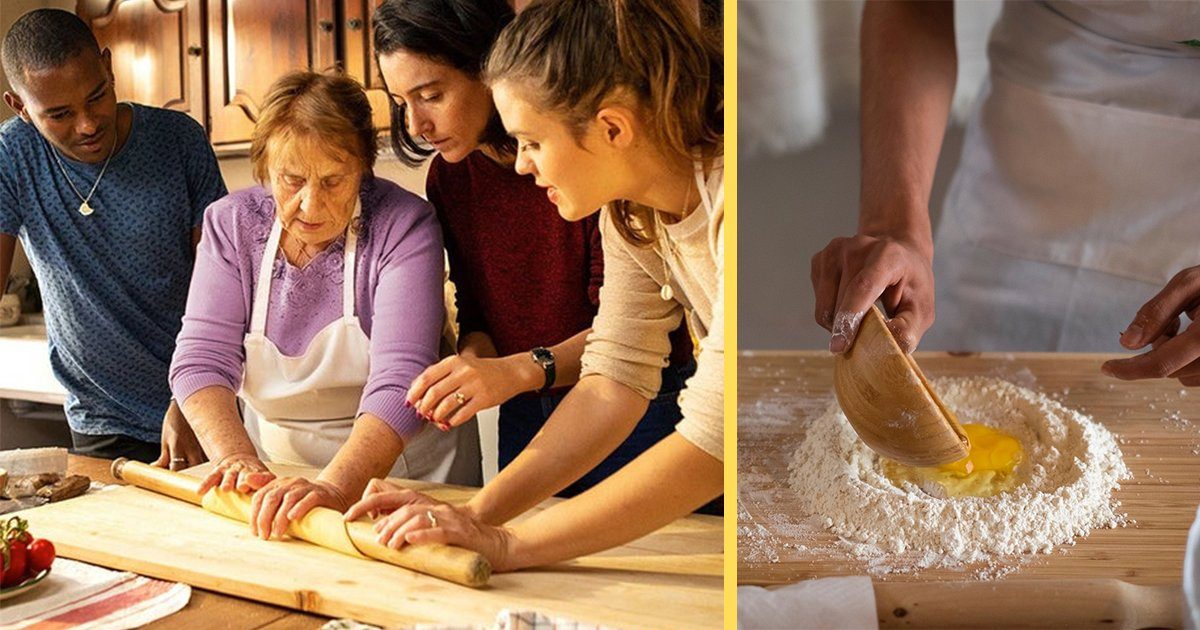
Who in the world is this Nonna?
Right now, everyone’s doing their part to cheer people up. From decorating the house with Christmas lights to delivering food, we’re all doing our best. Nonna is helping, too—she’s teaching us to make pasta instead of buying it.
The pasta-making class, Nonna Live, is taught by an actual Italian grandmother, named Nonna Nerina. She usually teaches in-person at an Airbnb Experience just outside Rome. That experience drops you into a rustic Italian kitchen for two hours to learn three kinds of handmade pasta. However, Airbnb Experiences are paused right now due to coronavirus.
That’s why Nonna Nerina is now teaching through a virtual cooking experience, aka an online class. We love her!
How to sign up
You can cook with Nonna Nerina from the comfort of your own kitchen. Sign up for the livestream for $50 USD, and enjoy learning with your new Italian grandma every weekend. There are weekday classes, too, led by her granddaughter, Chiara Nicolanti. Here’s the lineup:
- Wednesday 10 a.m. PST // 1 p.m. EST
- Cooking with Chiara
- RAVIOLI with Butter Sage Sauce (Vegetarian)
- Wednesday 10 a.m. PST // 1 p.m. EST
- Cooking with Chiara
- GNOCCHI with Pesto (Vegetarian)
- Wednesday 10 a.m. PST // 1 p.m. EST
- Cooking with Chiara
- LASAGNE
- Wednesday 10 a.m. PST // 1 p.m. EST
- Cooking with Nonna Nerina!
- FETTUCCINE with Tomato Sauce (Vegetarian)
- Wednesday 10 a.m. PST // 1 p.m. EST
- Cooking with Nonna Nerina!
- CANNELLONI
A week before the class, you’ll be sent an ingredient list so you can buy all the things you’ll need before attending. If the grocery stores look daunting right now, you can always try grocery delivery. Either way, this class will have you saying molto bene in no time!
COVID-19, the official name for the novel coronavirus, has swept the globe in just a matter of months. As the numbers of illnesses and deaths grow, governments have shut down schools, restaurants, stores, hair salons, and more to combat the spread of the highly contagious disease. This is the experience of one 50-year-old U.S. man who has tested positive for the coronavirus.
Here in the United States, more than 30,000 Americans have tested positive for the coronavirus. I am one of them—and I know exactly who gave it to me. These are the lessons I hope you take away from my experience. (Editor’s note: Names have been changed to protect the subjects’ identities.)
You can catch it from someone with no symptoms
My wife, Megan, and I went out to dinner with an old friend who we had not seen in a while. There had been some talk of COVID-19 in the news, but it was early in the outbreak and people were still going about their daily routines. Even though everyone in our group felt perfectly fine, we took precautions: We washed our hands with soap and used hand sanitizer, did not share food, and had no significantly close contact.
A few days later, our friend called and told us that she had tested positive for the coronavirus. She had felt some mild symptoms for a day or so after the dinner and was able to be tested because she is a doctor. Despite our precautions that night, the virus was also passed to me and another friend who had joined us. That makes two people who caught the virus from someone with no symptoms or reason to believe she had the virus.
We are not the only ones. In a study published on MedRxiv about the COVID-19 outbreaks abroad, researchers found that 48 per cent of cases in Singapore and 62 per cent of cases in Tianjin, China, could be linked to people who were pre-symptomatic, or had not developed symptoms yet. (The study has not yet been peer-reviewed.) That’s why the U.S. Centers for Disease Control and Prevention (CDC) has recommended reducing physical contact with others and limiting group gatherings, even if you do not feel sick. You can also ignore these 10 etiquette rules because of coronavirus.
You might not feel sick right away
Even though Megan and I did everything we could to prevent spreading the virus to others—including immediately quarantining ourselves and calling everyone we had been in contact with—three days had passed before we found out we had been exposed. In those three days, we saw some friends and went to the supermarket, and Megan went to work. Those three days haunt us. Luckily, no one we had been in contact with seems to have gotten sick from us so far.
Research shows that a person could unknowingly carry the virus and pass it on to someone else for an average of four to five days before showing symptoms. (Again, this study has not yet been peer-reviewed.) All the more reason to follow the CDC’s guidelines by keeping your distance and washing your hands regularly and correctly. Believe it or not, that simple hygiene practice can prevent coronavirus and a long list of other diseases.
The symptoms are similar to the flu
The day after we found out our friend had tested positive, I started to feel a little “off.” Not sick necessarily, but not 100 per cent either; I felt a little tired and my head was a bit cloudy. That day, which was four days after we had seen our friend, I stayed in the master bedroom away from the rest of my family. I woke up the next morning with a 102-degree fever. That’s when we realized that I might have caught the virus from our friend.
Worried that you might have coronavirus? While a mild case of COVID-19 might only cause a small headache, it’s more likely that you will have flu-like symptoms including a fever, chills, cough, and shortness of breath, according to the CDC. My symptoms are mostly what they call “mild,” but mild is not what you think. It feels like I have the flu, which can be very debilitating. Thankfully, I am young, healthy and in good shape, so right now I am just focused on resting and getting better.
Not everyone can get tested
The morning I woke up with a fever, Megan immediately called our state’s coronavirus hotline, who then conferenced in our primary care doctor and the head of our local hospital system’s coronavirus team. We explained that we had been in contact with someone who had tested positive, and I was having symptoms. They quickly approved me to receive a test at an urgent care centre located five minutes from my house. However, Megan could not get a test because she was not showing symptoms. (Note for Canadian readers: Use the Government of Canada’s COVID-19 self-assessment tool to determine whether you should be tested, and how to go about it.)
Quarantine and notify people if you feel sick
Megan and I immediately quarantined ourselves and our children once we heard that our friend had tested positive. Since I developed symptoms, I have been isolated in the master bedroom for six days, and the only interaction I have with Megan is when she brings in food. Megan is sleeping on a small couch in our home office, and our kids stay in their rooms. Megan minimizes her contact with our kids in case she is carrying the virus.
We also called everyone we had been in contact with to let them know that I had tested positive. It was the responsible thing to do. It is hard to tell people we might have given them a virus, but not telling anyone anything would have been cowardly and irresponsible. It wasn’t an option for us, and it shouldn’t be an option for anyone in our situation.
This virus can bring people together
While we have not been out of our house in over six days—and will be here for another eight or nine at least—we have felt such love and concern from those around us. Even people who don’t know what is going on have reached out just to check in, which in turn has inspired us to reach out to others. Our kids stream movies online with their friends, and my office has daily video calls to keep everyone connected. We’ve made an effort to spend time together as a family, too. Although Megan and the kids and I can’t be in the same room, the four of us still play online games together.
This time has caused a lot of fear and uncertainty for my family and others. But for us, there has been a silver lining: Technology can bring people together in amazing ways. These uplifting stories of neighbors helping during coronavirus will inspire you to do the same.
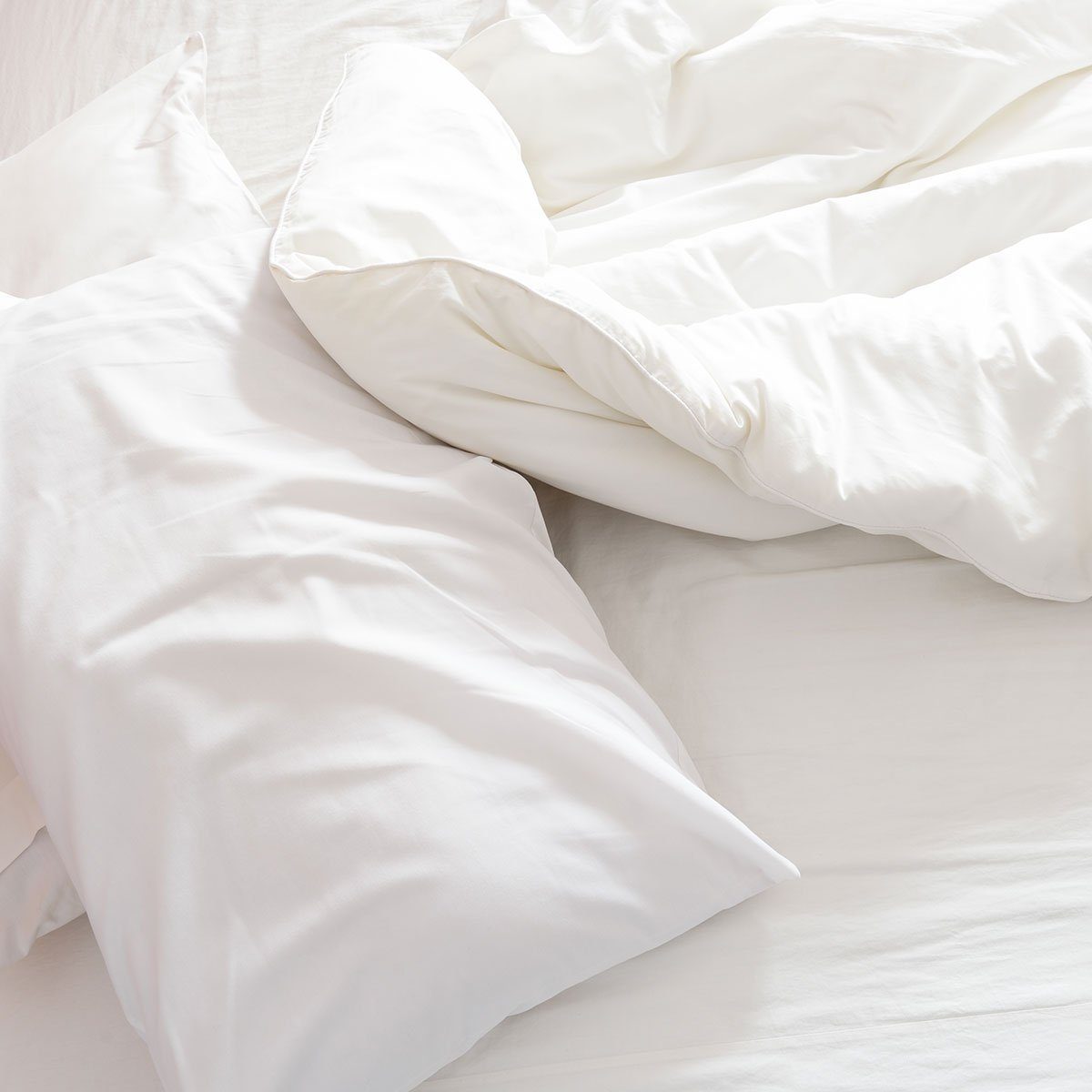
How to handle contaminated bed sheets
Even in normal conditions, bed sheets collect a staggering amount of germs and bacteria and should be washed at least once a week. But once they come into contact with a sick person, that laundering needs to be handled with an even higher level care and attention.
That extra care starts with how the bed sheets are handled, even before they make it into the washing machine.
“If you have disposable gloves handy, it’s suggested that you wear those while performing these tasks,” said Kathy Turley of Home Clean Heroes. “If you don’t have gloves, be sure to thoroughly wash your hands after touching the sheets and towels, and then follow up with hand sanitizer that is at least 60 per cent alcohol based.”
Turley also recommends that people avoid placing their dirty sheets in a laundry basket, as anything that touches the sheets could be contaminated by any germs they carry. Germs and bacteria can survive on objects for up to a few days. So instead of risking contaminating a laundry basket, bring your sheets to the laundry room in an inside-out pillowcase.
“Why put the sheets inside a pillowcase? You want to avoid `hugging’ the sheets by carrying them in your arms/close to your body when walking to the laundry room,” said Turley.
How to wash contaminated sheets
Once you’ve brought the sheets into the laundry room, here’s how to wash and disinfect them:
- Empty the sheets from the pillow case into the washing machine and then toss the pillow case in as well.
- Before touching any of the knobs or buttons on your washing machine, remove your plastic gloves and wash your hands.
- Wash the sheets on the highest temperature setting possible with laundry detergent and a disinfectant (more on that below).
- Dry the sheets on high heat.
What works as a sheet disinfectant?
If you’re going to use chlorine bleach to disinfect sheets, it’s important to follow the standard best practices for using bleach in the laundry. If your laundry machine has a built-in bleach dispenser, go ahead and use it. If not, dilute 3/4-cup of bleach with one quart of water and add it in five minutes into the wash cycle.
“Chlorine bleach with 5.25 per cent to 6.15 per cent concentration of sodium hypochlorite is an effective disinfectant,” said Dean Davies, cleaning supervisor of Fantastic Services.
If you don’t have bleach on hand, or are working with coloured sheets you don’t want to ruin, Davies said that pine oil works great as an alternative disinfectant. He recommended products with as high a concentration of pine oil as possible, which will eliminate bacteria and germs most effectively.
Final steps
There are still a few more things to do once you pull your freshly-laundered sheets out of the dryer. Quickly cycle the washing machine to eliminate the risk of any lingering germs or bacteria contaminating future loads of laundry.
“To disinfect the washing machine’s drum, simply empty the appliance, pour one cup of chlorine bleach to the empty washer drum and set the water temperature for the hottest, heavy-duty settings,” said Davies.
Finally, while your washing machine drum is cleaning itself, you might as well take the time to wash your hands again!
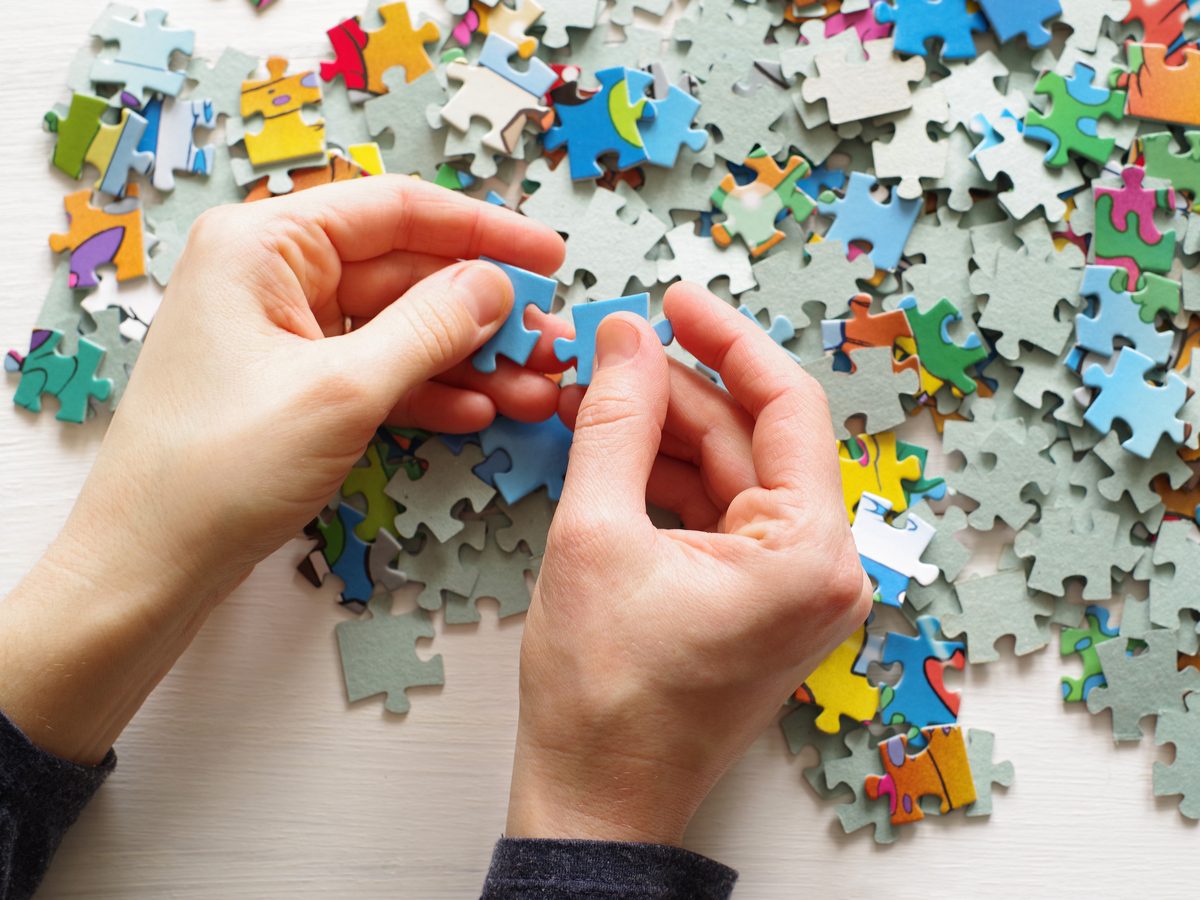
While out shopping for Christmas presents in 2018, I bought myself a jigsaw puzzle on a whim. It was an unusual buy, one that I now recognize as an attempt at dealing with that particular stress many of us experience during the holidays. Don’t get me wrong—I love seeing my family. But holiday get-togethers have a way of putting any personal shortcomings at centre stage. This cheery pink puzzle had everything I felt I needed to distract myself in one box. And at $20, the price was right. Why not?
As soon as I started on my puzzle, I knew I’d found exactly what I was looking for. Instead of my usual late-night Netflix binge, I was sorting its 1,000 pieces well into the wee hours. I finished it in just a few days. I felt possessed by the soothing, methodical action, almost like I’d been hypnotized or spent hours meditating.
Robyn Breen, a dance instructor at Misfitstudio in Toronto, Canada, knows the feeling. At a family gathering years ago, Breen was reintroduced to puzzles and fell in love with its soothing effect. “I thought, Whoa, I feel really good when I’m doing this. I feel really chill,” she recalls. Breen suffers from anxiety, and when she was having worrisome thoughts about an upcoming trip to Nicaragua, she turned to puzzling instead of prescription medication. It worked, and jigsaws have since become an essential part of her daily routine.
Susan Vandermorris is a clinical neuropsychologist at Toronto’s Baycrest Health Sciences, a global leader in brain health and aging research. Any type of puzzle is good for the brain and points to the stress-relieving benefits of jigsaws, in particular, she says. “If you’re doing a puzzle, you are, by definition, disconnected and engaged in a task that’s immersive, away from the interruptions and stresses of day-to-day life,” she explains. “And that, of course, is good for your brain.”
Vandermorris believes that doing puzzles with others boasts even more health benefits than doing them on your own, adding that it provides a rare opportunity for intergenerational engagement. “Get the teenagers off their smartphones and working on a puzzle with Grandma, and suddenly you’ve got a really nice family interaction that seems to be harder and harder to come by these days,” she adds.
Interaction was certainly hard to come by for Jack Brait. The 23-year-old from Marshfield, Massachusetts, has autism and first took to puzzles as a kid because they “gave him a break from the demands of socializing,” says his mom, Michele Brait, who soon realized her son had a remarkable ability. “He could complete a 1,000-piece puzzle in one sitting,” she recalls.
As Jack grew, so did his puzzling talent—and its benefits. In 2014, while still in high school, he completed a 32,256-piece puzzle (then the largest in the world) and was inducted into the Ravensburger Largest Puzzle Hall of Fame. Three years later, he tackled another behemoth: 40,320 pieces. Last year, he finished a 52,110-piecer.
Jack completed these puzzles by himself, but what used to be an escape from socializing now facilitates it. His oversized works attract attention, and he is more than willing to share the spotlight. “When I completed my first giant puzzle, I invited friends and family,” he says. “I enjoy doing them around other people.” But the best is when one of his puzzles is put on public display, as Jack likes to donate his handiwork. That, he says, makes him feel “unbelievable, proud, and happy.”
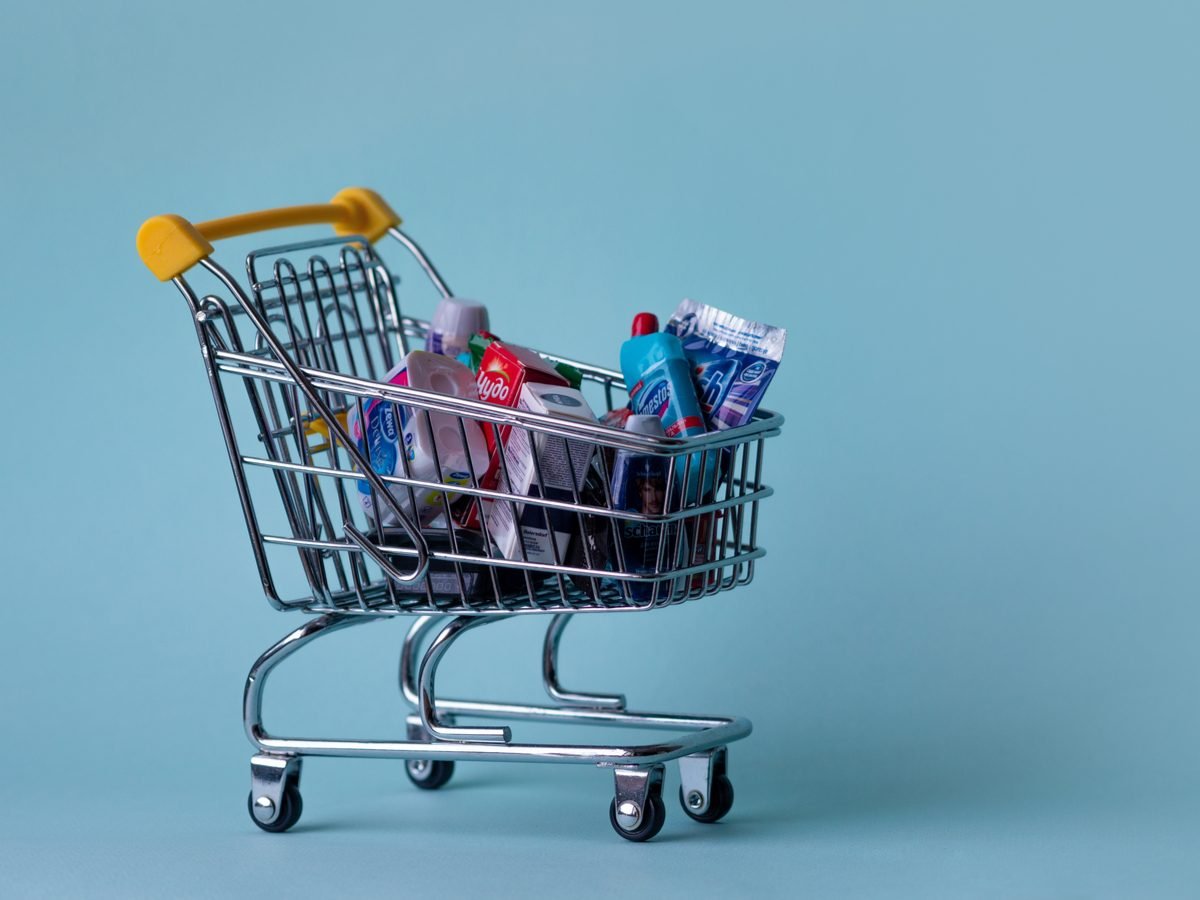
Seeing shelves emptied of toilet paper and sanitizer quickly shows where people’s first thoughts turn when it comes to a containment. Most households think to stock up on groceries, too, but here are some other goods to think about having on hand during the extra time at home.
Outdoor cooking necessities
Firing up the grill is a good way to seize some outdoor time and shake up your cooking routine. Make sure you have propane, charcoal, lighter fluid and any other favourite grilling goods stocked and ready. Chances are you have enough extra time to do a complete grill tune-up, too.
Detergents and cleaning supplies
Did you remember to stock up on laundry and dishwashing detergents? Don’t forget window and other household cleaners, for regular or deep cleans. Now’s also your chance to finally learn how to make your own homemade cleaners, which also means stocking up on basic pantry supplies like vinegar, baking soda and borax, as well as handy containers in which to store them.
Envelopes
Writing letters or creating art for others fills time and connects, which is especially important for loved ones feeling sick or isolated. It’s a great educational activity for kids, too. Stock a variety of envelopes, so you don’t have to fold those full-page masterpieces.
Distilled water and filters
Even if you’re connected to city water services, you might want bottled water for a range of needs unique to your household. Nasal rinses for allergies or colds, watering household plants and filling up fish tanks are just a few ways distilled water can be useful. Stock extra water filters for faucets and pitchers to make drinking water readily accessible for you and for mixing baby formula.
Potting soil and seeds
Gardening and digging in the dirt is great therapy for worry and stress, both of which can spike during quarantine. Grab potting soil, planters and other necessities to re-pot overcrowded houseplants, start new ones, or start flower, vegetable and herb seeds indoors.
Batteries and light bulbs
Have enough batteries on hand to keep your ramped-up indoor and outdoor activities running, including remote controls, your computer mouse, baby monitors, hearing aids, flashlights, sump pumps or anything else that requires a boost of power. Also check that your go-to light bulb supply has a few extras given the higher-than-usual need, to ensure your home stays well-lit during containment.
Craft supplies
Stock up on paper, pens, yarn, glue, clay, beads, embroidery floss — really any preferred materials designed to spark creativity in both kids and adults. You can stick to the basics, such as colouring and doodling, great all-ages stress relievers, or take this as an opportunity to explore new interests. YouTube tutorials can school you in anything from knitting to making your own fragrant home spray or soaps.
Health essentials
Make sure you have prescriptions on hand, as well as staples such as vitamins, immunity boosters, bandages, antibiotic cream, cough and cold medicine, pain reliever and antacids. Remember Pedialyte or other drinks to replace electrolytes, and broths to offer nourishment while recovering from illness or an upset stomach. For young children, stock up on diapers or disposable underwear (especially if change in routine triggers potty-training regression), diaper cream, sunscreen and pediatric medicine.
Pet supplies
Start with the basics, such as kitty litter, food and enough waste pickup bags to stock the extra walks you may be taking. Think about dry alternatives for any pets who may be used to fresh food, such as reptiles that eat live crickets, too. And consider investing in a few new toys to keep them entertained during the extra together time.
Brain boosters
Stock up on good books, games and puzzles so you have lots of engaging options. While digital books and online games are great, it’s a good idea to take screen breaks, too. Order books from your local bookstore. Consider crosswords, Sudoku and card games, too.

Not washing your hands after touching money? Read this
Forget library books, toilet seats, and public doorknobs—they’re no competition for the cash sitting in your wallet right now. While most of us don’t think about washing our hands after touching money, a 2019 study found that coins, cash, credit and debit cards are some of the germiest things you can come into contact with.
To find out just how dirty our various forms of payment are, a team of researchers from LendEDU used a scientific device that tests for bacteria on a given surface. They tested 41 different credit and debit cards, 27 different bills, and 12 different coins, and noted down the average germ scores of each item. The higher the germ score meant the dirtier.
What would you guess would be the dirtiest of payment methods? If you answered cash, you’re mistaken. While at the end of the study cash had a germ score of 160, credit/debit cards had a score of 285. Coins, on the other hand, had the lowest average germ score of 136. (For reference, it is recommended that a food establishment surface should have a germ score of 10 or less.) The reason? While cash stays in circulation a lot longer and can travel across the country by changing hands, debit cards are actually the most commonly used payment method today.
This, of course, does not mean cash is that much safer. According to a 2014 research from Mastercard and the University of Oxford, the average bank note is home to 26,000 types of bacteria including E. Coli.
“Keeping money clean is going to be difficult particularly when you’re using it day-to-day. With cards, it is, however, worth wiping them semi-regularly,” Sean Perry, founder & director of Neat Services, tells LendEDU. “But the best advice is just to make sure you wash your hands regularly throughout the day, and particularly before and after eating. And, washing your hands after eating will mean a reduced chance of any food debris going back onto the money once you finish.”
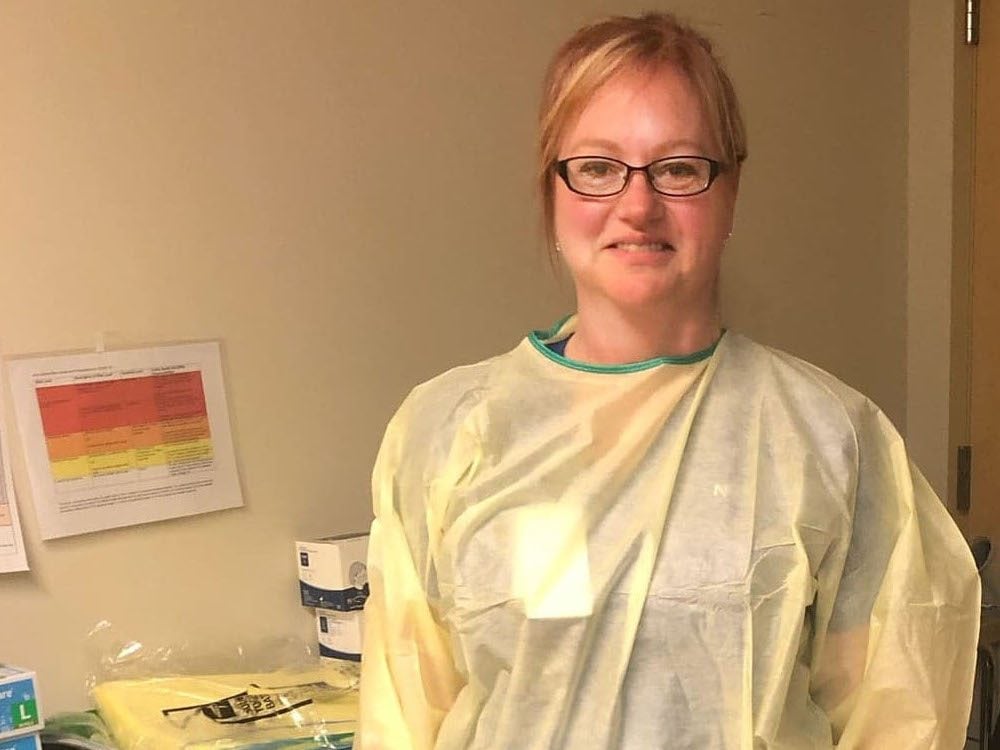
Cynthia Rennie-Faubert, 48, nurse, Cornwall, Ont.
In January 2020, as I watched the news about the coronavirus outbreak in Wuhan, I kept thinking, ‘This is not good.’ As the situation escalated, I knew it was only a matter of time before it came to my hometown in Cornwall. And, on February 15, it did.
That day, we found out the government was sending over 100 Canadians citizens who were aboard the Diamond Princess, an infected cruise ship, to a hotel here for a 14-day quarantine. Suddenly, things got very real. As a nurse in the emergency department at Cornwall Community Hospital, I’d be treating any passengers with the virus. I didn’t even have time to fully absorb the news—I just grabbed my scrubs and sprang into action.
Understandably, news of the quarantine made a lot of people in Cornwall nervous. Our hospital team felt enormous pressure to keep everybody safe. We had to contain the potential spread and not allow any leakage into our community. Things moved fast. We immediately upped our isolation processes at the hospital. Our storerooms were filled with pandemic supplies, especially gowns and masks.
I often compare my job to being an air traffic controller. I’m responsible for moving patients through the department and making sure they have access to the right resources. With the possibility of cruise ship passengers being transported from quarantine to the hospital, I knew I had to be mentally prepared for every possibility. It wasn’t just about treating possible respiratory symptoms: most of the passengers were seniors and could need medical help for heart conditions, diabetes or even just general weakness.
At this point, there are two nurses assigned to the isolation area. Each must wear special personal protective gear over their scrubs. We get into our personal protective gear in an anteroom, which is used as an infection control measure before entering the isolation area. We do this between each and every suspected patient, putting on a fresh set of gear for every visit. It takes so much extra time that we brought in extra staff members. I’m working overtime to help pick up the slack.
Of course, there are times when it feels like the whole department is on fire. There are moments when we have multiple critical patients hanging in the balance, incoming trauma patients, and an overflowing waiting room. After all, in the ER, we’re still treating car accident injuries, heart attacks, strokes—anything you can think of, and a dozen things you can’t. And it’s all complicated by this virus. Say my team is running a Code Blue to resuscitate a patient. This happens often. But now, we have to think about the fact that, if a patient is unresponsive, we can’t ask for their medical or travel history. We can’t know if they’re infected. Right now, we don’t have the luxury of getting it wrong. We have to assume they could have the virus.
I felt so bad for the first cruise ship patients we treated—we were the first people they’d seen in a while, and our gear made us look like aliens! But they were very kind and patient. They were just aching to get home. Luckily, they didn’t have the virus. In the end, we averted disaster. Even better: all our emergency quarantine preparations gave the hospital a huge jumpstart as we all braced for the inevitable. I wasn’t at all surprised when, weeks later, after all the cruise ship passengers had gone home, the first case of COVID-19 in our community was confirmed.
I’ve been a nurse since 1994, so I’ve helped prepare for my fair share of outbreaks. I’ve worked through the rise of Ebola, H1N1, and SARS. But COVID-19 is a sneaky virus. This outbreak is scarier because patients can spread the virus while symptom-free. With SARS, it was clearer who was infected. With COVID-19, we have fewer clues that someone might be a carrier. On the plus side, past outbreaks taught us a lot about what to do now—especially when it comes to screening patients. During SARS, I wore my gown, gloves, mask and face shield for 12 hours straight at the front doors of the hospital, quizzing patients about respiratory symptoms as they entered the hospital. The gear seals in your body heat. I was sweating like crazy!
During this current outbreak, the mood at the hospital has definitely changed. Visitors are restricted. Tensions are high. Anyone entering the hospital is stopped at the entrance and asked about any recent travel and symptoms. If they don’t pass our screening test, we take patients directly into the isolation area of our Emergency Department for assessment. The trick throughout all of this is to stay calm and remind myself—and others!—that in most ways it’s just another ordinary day at work. We’re looking after sick patients in their time of need and taking precautions to keep ourselves safe as we do that.
Overall, I try to focus on the positive. For the majority of confirmed cases, the treatment is the same as for a common cold: stay home, stay hydrated, and rest. And, of course, wash your hands! As hospital staff, we have to stay calm and think clearly. I do that by taking things one patient at a time. It helps that my department is phenomenal. I couldn’t possibly do what I do without my fearless coworkers.
The only thing that scares me is if we reach a worst-case scenario. We only have so many ventilators, for example. I shudder at the thought of a “steal from Peter to pay Paul” situation emerging under the pandemic. That’s why I’m so proud of our national response. I’m happy people are practicing social distancing. And I see a huge shift in fewer people coming to the emergency department for small issues. People are trying to manage minor illnesses at home and I am so grateful.
I don’t think we’ve yet seen the full extent of this situation. I’m afraid the effects of COVID-19 are going to be felt for much longer than 14 days. That said, I believe my hospital will get through this. We’re a team. We’re all taking our turns working extra shifts. We know we have to be there for each other so we don’t burn out. In the meantime, I’ll stick to small traditions—like a celebratory breakfast after finishing a long string of night shifts.
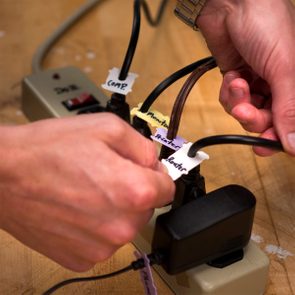

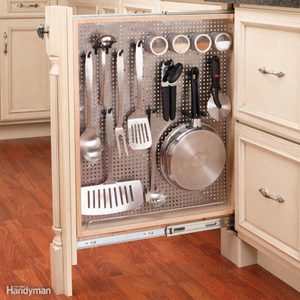
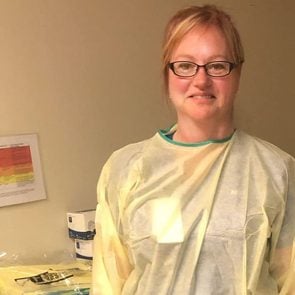
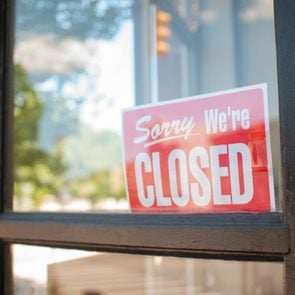
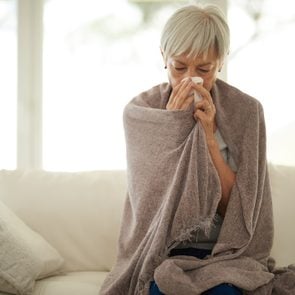


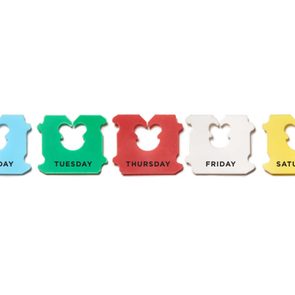

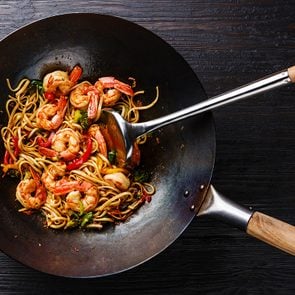





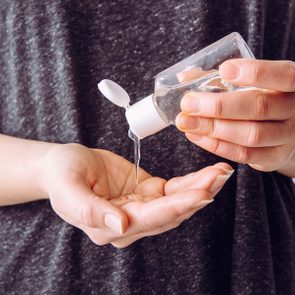 How to Make DIY Hand Sanitizer" width="295" height="295" />
How to Make DIY Hand Sanitizer" width="295" height="295" />


